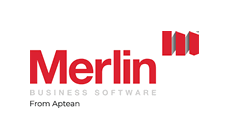Guidance for merged R&D scheme published
Companies claiming tax relief for research and development (R&D) will need to use the new merged scheme for accounting periods starting on 1 April 2024. Guidance on the new scheme has now been published. What are the key changes?

For accounting periods beginning before 1 April 2024, smaller companies could access a separate R&D scheme. Historically, this has been more generous than the relief available to large companies. Under the new scheme, SMEs will use the same framework as large companies to claim R&D expenditure credits (RDEC), unless they qualify for the narrowly drawn intensive scheme.
The main difference a small company will need to be aware of is the mechanics of the claim. The merged RDEC scheme involves adding a taxable credit to profits, then deducting it from the corporation tax liability. The SME scheme was a simple enhanced deduction. There are other changes too though. You will need to be aware of the rules regarding subcontracted expenses if you want to include these costs in your claim. There are also restrictions on the relief, e.g. relative to the company’s PAYE liability.
The new guidance is a handy overview and starting point. However, if your claim isn’t straightforward it is advisable to seek specialist advice.
Related Topics
-
Government rushes through NI cap on pension salary sacrifice
The government has already drafted legislation to impose a £2,000 limit on NI exempt pension contributions under salary sacrifice arrangements. What else do we know?
-
Sneaky change is a blow for side hustles
With most of the media focused on the headline-grabbing announcements from the Budget, a read of the published small print reveals another change coming in 2029. It’s bad news if you are an employee with a side hustle, but what’s going on?
-
Dodging the 2027 IHT and pension changes
In a little over a year the inheritance tax (IHT) exemption for unused pension savings comes to an end. If you’re married or in a civil partnership, one simple step might save your estate thousands in IHT. What is it?







 This website uses both its own and third-party cookies to analyze our services and navigation on our website in order to improve its contents (analytical purposes: measure visits and sources of web traffic). The legal basis is the consent of the user, except in the case of basic cookies, which are essential to navigate this website.
This website uses both its own and third-party cookies to analyze our services and navigation on our website in order to improve its contents (analytical purposes: measure visits and sources of web traffic). The legal basis is the consent of the user, except in the case of basic cookies, which are essential to navigate this website.